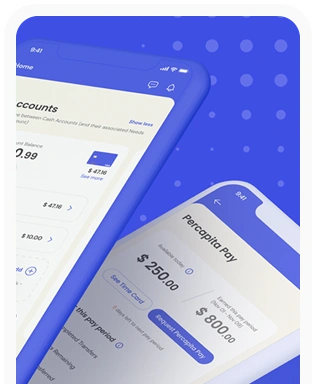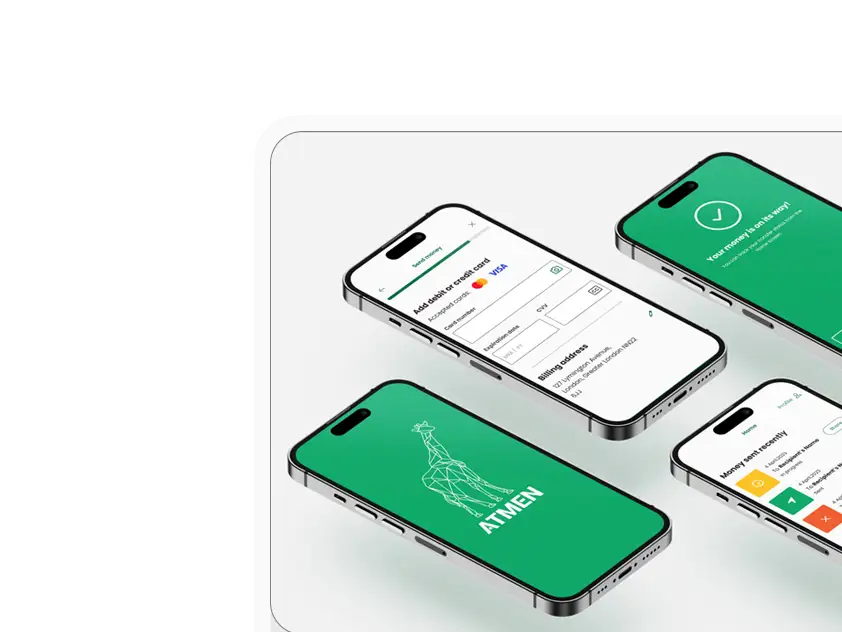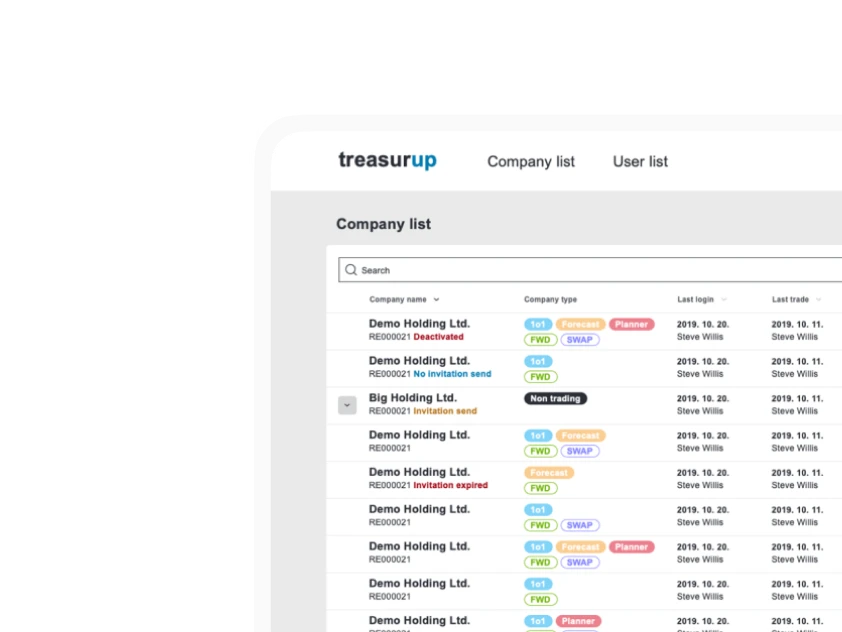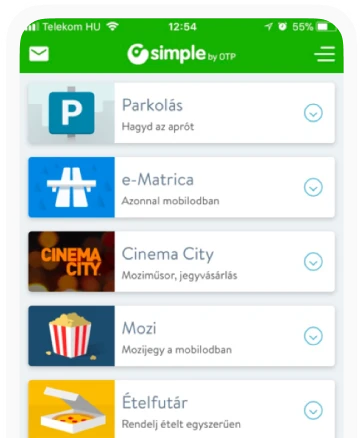Working with an in-house team: Which UX design team to choose? - Part 2
Why build an in-house team?
At some point on your business journey, you may notice that you spend too much on UX or you might just simply realise that UX is a core competency for your team. You may then decide to internalise this expertise. And why not? It seems cheaper. The members are more dedicated and every cent that you spend on them you invest in your own business. We have banking clients from Brussels to Budapest who are following this path. They had zero experts some years ago and now they have a strong team. It is like preferring to pay a mortgage on your flat and own it in the end rather than just wasting your salary on rent. Well, this might be true, but this route, like every solution, has its pros and cons.
The benefits of building an in-house UX team
It might be slightly cheaper
In most cases, internal teams are set up to save costs. If you make the proper calculations and you hire the right people, you can have a team for around 60%–80% of the cost of using the same number of agency people continuously. This is true. But people often forget about the followings factors when making their calculations:
- Internal teams are usually more comfortable than agency people (explained later in detail). What your team can deliver in 6 months probably could be executed by an agile agency in 4 months.
- They will need special software (like Figma, Axure, etc.) and powerful MacBooks. They won’t be happy with the regular Asus notebooks used by your other team members.
- You will have to pay for the office where they sit. And this is definitely not cheap if you are seated in Amsterdam or Zürich. To save this cost, you’d have to go remote.
- When the workload drops, you’ll still have to pay your team and you won’t be able to make perfect transitions between projects to have 100% utilisation of your workforce. People working on bigger projects especially hate when they get micro-projects between two bigger engagements to fill up their time.
- You won’t have to pay holiday pay for agency employees.
- You will have to pay for external training to develop the team and keep them motivated. Keep in mind that UX people are very sensitive about their professional growth. If you are in a country where the UX community is not strong enough, you’ll have to consider expensive trips to London or other popular UX hubs. Remote conferences are a good solution, but your people will miss the networking opportunities.
- You’ll have a significant one-time cost to hire and integrate good talents.
- You’ll often compare apples with oranges. The people you hire might ask less than your regular agency does for their team members per month, but they’ll probably be less experienced as well.
- The difference between an in-house team and the agency cost is smaller in high-income-tax countries like Belgium, the Netherlands, or the UK.

You set the direction of growth
All the money you spend on education will improve your own team and you can set the direction in which they grow and get stronger up to a certain level. If you have a product where artificial intelligence (AI) plays a big role, you’ll have to send your people to the best AI training and you’ll have to hire people talented or experienced in AI. Probably your agency won’t be able to make you happy if you have very special needs regarding expertise. They might have 1 or 2 people dealing with your very special field but not all of them.
They better understand your business point of view, voice, and assets
You may think that your business is very special, that your processes are much more complicated than in other types of businesses. All of us think that, regardless of whether we are bankers or fishers. But it is true that domain knowledge or knowing the company procedures does matter. If you have internal UXers, they have the time to really learn your field and procedures. They will understand your business more than any agency employee or freelancer.
They can navigate office politics better
If your company has more than one employee, politics plays a role. If you’re working in a bigger organisation, you can spend more than half of your time on politics, evangelisation, and alignments. We all navigate better in an environment that we know well. Even if your UXers are not shrewd Machiavellists, they know how to influence whom and when. And convincing others and getting support play a big role in design. Without the commitment of business and IT to make great products, the UXers’ mission is impossible.
They can develop consistent solutions
Consistency is one of the biggest virtues of a good interface. You have a lot of weapons to fight for it. The most effective of them is your design system and there are good practices to maintain consistency as well. But personal continuity and knowing your projects can help, too. Good methods and the design system won’t solve all of your problems, so knowing how you are designing in general or how you were doing something similar last time might really help. There is still a need for human memory.
Your secrets are safer
Though freelancers and agency people are well trained in keeping secrets, they make mistakes occasionally. They might brag about your project in front of the wrong audience. This has a lower chance of happening if you work with foreign agencies (e.g. you are in Vienna and your agency is in Bratislava or Budapest). This is not very common, but it happens. On the other hand, your people make fewer mistakes simply by meeting fewer people who might be harmful to your business.
The shortcomings of building an in-house UX team
You need to have a constant workload
You need to keep your team busy, not just most of the time but always; otherwise, they could cost more than your agencies. You might think that you have so much UX work that this won’t be ever a problem. Maybe yes, but maybe you will have gaps between releases or just simply can’t assign or reassign people as quickly as agencies do. They learned it the hard way; if they can’t execute this promptly, they simply die. On the other hand, there is less pressure on your managers to use UX people effectively since their costs are much lower than the cost of the developer’s team. If the managers know how to allocate people well, they will focus on the more expensive teams.
How to handle it?
If you have a relatively stable but fluctuating workload, the best way is to have a core internal team that you can augment with external people whenever needed. If your workload is very hectic but there is always something to do, hire some UX managers who are good at coordination and strict in quality and can manage your agencies and freelancers.

A small team without a senior is just a bunch of busy people
Many companies start to hire junior or mediocre talents first to keep the initial investment low. They think UX is just a new way of drawing, so why hire that expensive talent with 15 years of experience while those juniors are smart digital natives? Less experienced people can find their way in small start-ups but in bigger organisations, you need strong veterans to build a coherent team to represent and fight for design values.
How to handle it?
The answer is easy. Start to build from the top to the bottom. Hire the boss first. It might not be easy most of the time since your company lacks a good design image, so picky seniors won’t be sure that your organisation will support the quality they like to associate themselves with. On the other hand, it might be motivating to build their own team, selecting the people with whom they want to work. When you hire, focus on emphasising this value; it really counts. You can use external experts to evaluate your candidates since not being a UX strategist you can’t decide whether they are truly good or simply experienced in creating alluring CVs.
Other teams eat them for breakfast
Your people might be better at navigating your internal politics than external people. This is only partially true. They might be good at altering things and navigating based on available information but on the other hand, they may not handle conflicts and stress that effectively. Most internal people love comfort. If your energetic leader, who is less sophisticated about user values, assertively asks someone to do something, they might say yes even if they think that the leader is utterly stupid. On the other hand, freelancers and agency people are battle-trained. They are challenged, and pressured day and night. They won’t be afraid to argue and fight with your business and IT people if they are convinced that they’re requesting something inappropriate.
How to handle it?
When you are hiring, pay a lot of attention to filtering out comfortable and conflict-avoiding people. Mix your team with former freelancers or people with agency backgrounds. But be aware that they might think about your company like veterans who want to retire after 20 years of constant battle. Hire people who dare to talk.
You can’t hire real talents
If your brand does not have a strong design culture, it will be almost impossible to hire top designers. They will prefer agencies or cool start-ups and scale-ups. If they can choose to work for a new challenge in New York or San Francisco, they will ignore your offer. Offer more than just money to get quality people.
How to handle it?
The argument that you can use is impact. UXers love to change the world. It does not matter that your company is in Zurich or Ghent in contrast with the hot New York offering. If you are a big, boring company with a million users, you might be challenging for a strong UX leader who wants to change the lives of one million people through a boring product. This would be a challenge where they can show their strength.
They might be slow
Not all in-house people are slow, although agency people and freelancers definitely think so. In-house teams might have great strategic minds and be fast thinkers, too. On the other hand, it is indeed easier to get comfortable in an in-house team setting. If you are a freelancer, every minute that you waste costs you money. If you are an agency employee, the management is pressuring you about profit, deadlines, budgets, etc. If you work on an in-house team, your speed and quality are harder to monitor. Nobody understands what exactly you are doing, how you are doing it, or how much time it is taking you. You might report to multiple departments, so it is harder to follow up on who is blocking your speed.
How to handle it?
You might think that tight deadlines are the solution. They’re not. It is easy to deliver low quality on time; it is hard to challenge since there is nobody in the organisation who understands the design better than the designers. It is better to use effective time management and to discuss the value of methods and steps used. Is it really necessary to spend your whole week experimenting with this cool research method you read about at the weekend? Maybe not.
They don’t get inspiration from other industries
Your team members probably have not worked all the time on projects like yours but now they are focused on one product or at least one segment of an industry. It is a big advantage on one hand since they know the details, the processes, etc. On the other hand, they know less about what is happening in other industries, probably the most innovative ones. It is very easy to be narrow-minded or conservative if you are on an in-house team.
How to handle it?
You have to make sure that your team members are following other industries. There are several ways to achieve this:
- Emphasise the importance of best practice research that focuses on other industries different from yours.
- Invest in education; send them to conferences.
- Make them talk often with external designers. If you have external freelancers and agency people, help them to mix, to like each other. It isn’t a big thing. Maybe you’ll pay for a round of drinks but if they talk a lot, you’ll benefit much more from it.
- Make business and IT people talk with external designers to get to know the standards. It’s easy to trick you into believing that this is the best that can be done if your best practice relies only on Facebook, Instagram, and Uber…
- Involve external designers in the discovery and definition phase of your products. Do design sprints where you include them.
- Support innovative talks and thoughts. If they are interested in voice or AI, enable them to study these fields or let them have pet projects if your budget allows.
They burn out easier, so quality decreases
Burnout is one of the biggest issues in the life of an in-house team. It might get boring, or they just do whatever the business or the IT asks. It is easier; if they argue nothing changes. Great ideas surface in mediocre products.
How to handle it?
- Let them select between new projects and assignments
- Let them have pet projects related to innovation
- Use methodologies that help to control more assertive team members like Lego Serious Play
- Talk with them often and help them personally to manage stubborn leaders from other departments.
Having an in-house team can fix several problems that you might experience with freelancers. On the other hand, you might have issues with quality and speed, not to mention that it won’t be as cheap as you originally envisioned. These issues could be fixed by working with a top-quality agency, though there is no such thing as a free lunch. Every solution has pros and cons. Our next article talks about how to use an agency effectively to have the best of all solutions.

Loss of profit is never calculated
When you compare the cost of hiring a freelancer or an agency versus building an internal team, it is a common mistake to ignore additional cost elements: special taxes, hiring, equipment, holidays, training, providing a proper workspace, ad hoc compensations, etc. The more experienced companies include these elements in their calculations at least to some extent. But we have seen no company include a loss of profit in their calculations when building up an in-house team. On average it takes at least 3–6 months to build a 3–5-member in-house team. If you had hired an agency you could make profits 3–6 months earlier. If you have other people (business analysts, product owners, developers) who are waiting for the UX input, their salaries (at least in part) might increase your loss. This number is often much higher than the amount you save by having a cheaper in-house team later on.
How to handle it?
When you need a 2–3-member team relatively soon it is always better to start with an agency, which you can replace when you have a team of the desired quality. If you make the rules clear in the beginning, they will go along with you.









